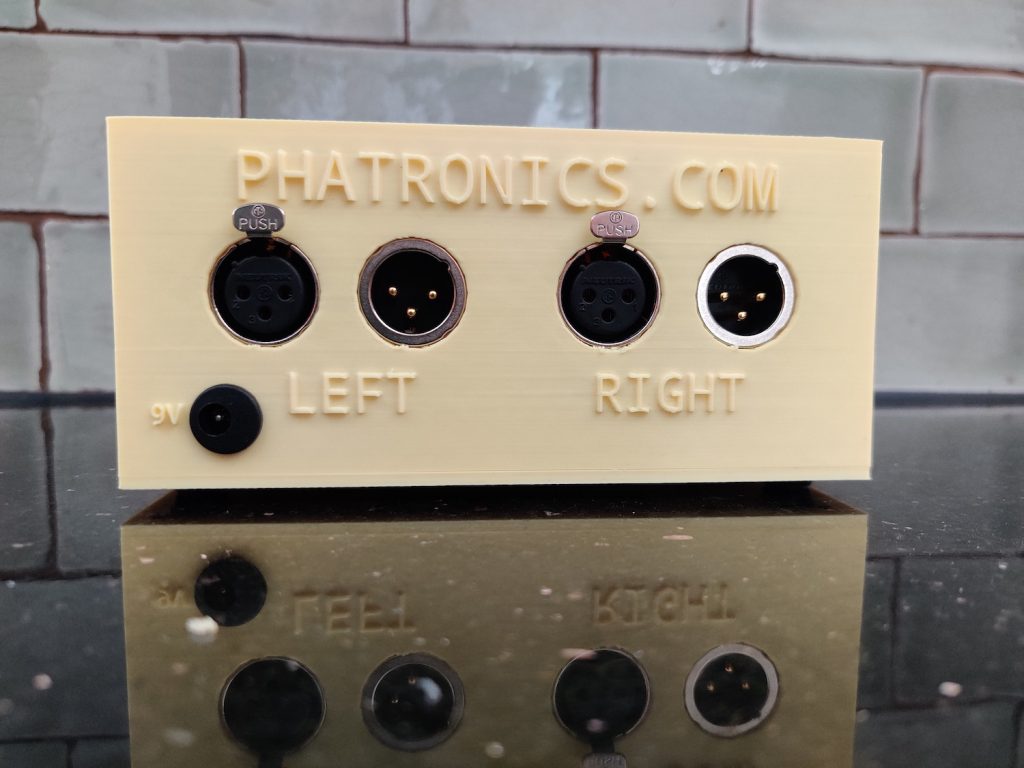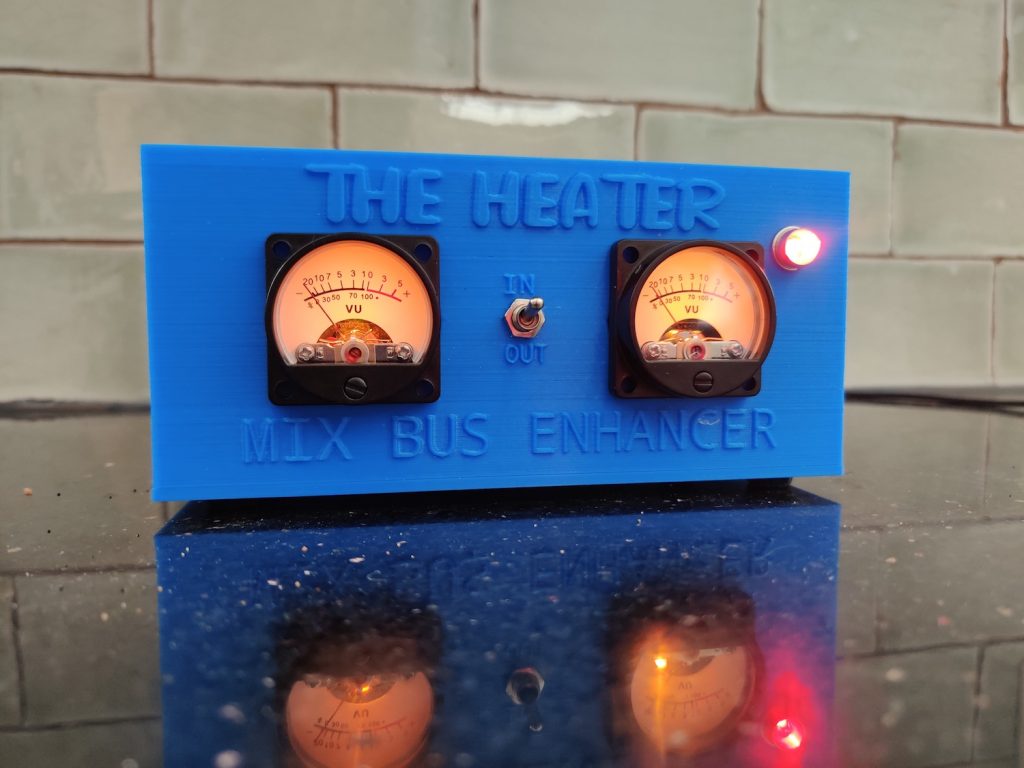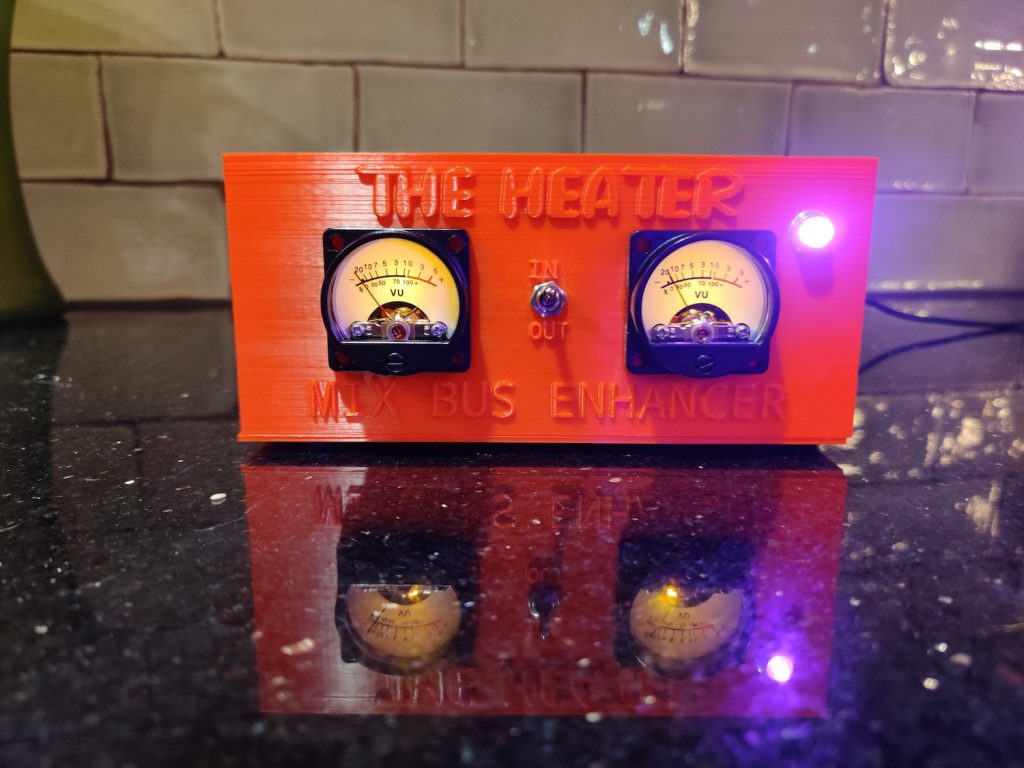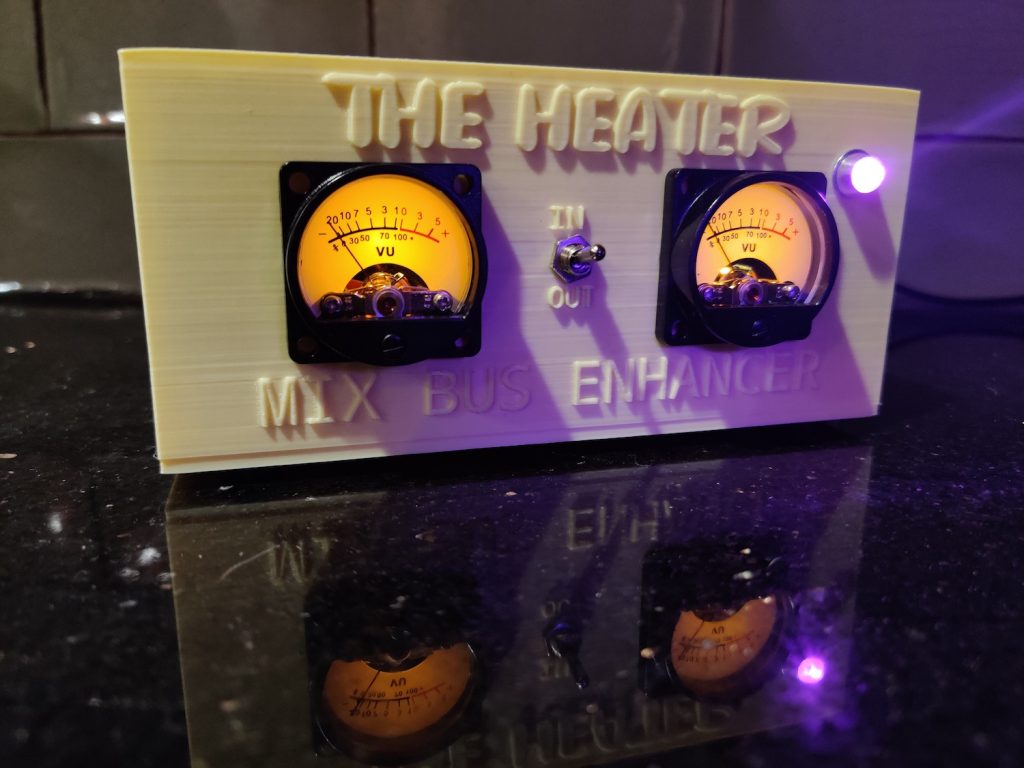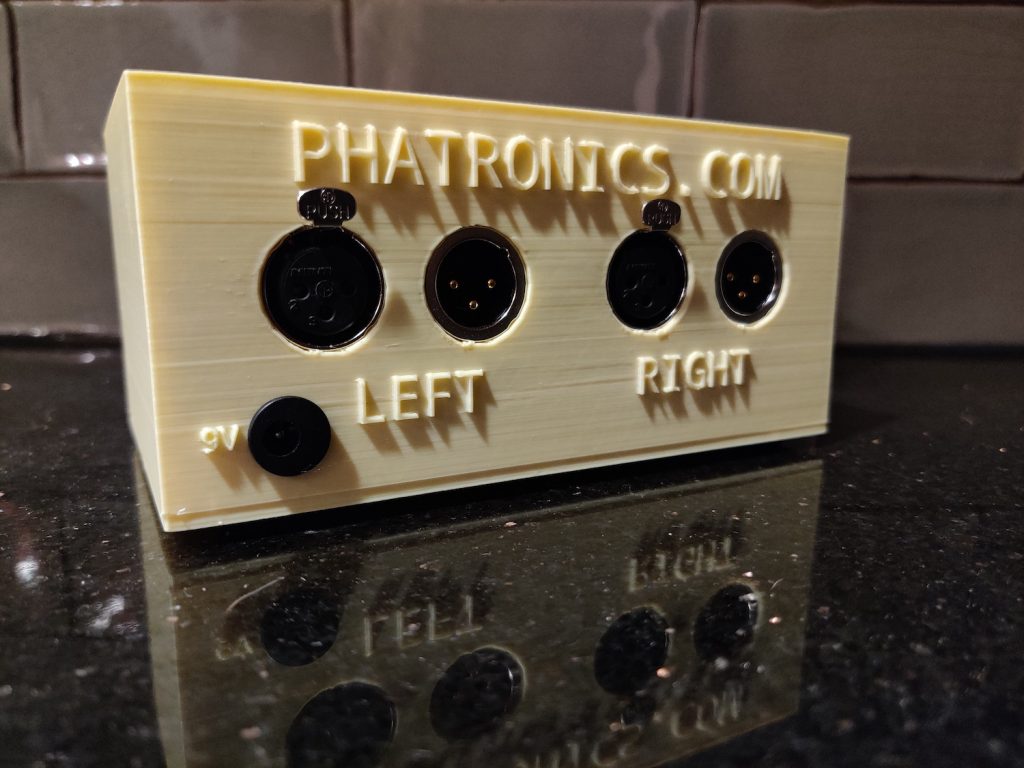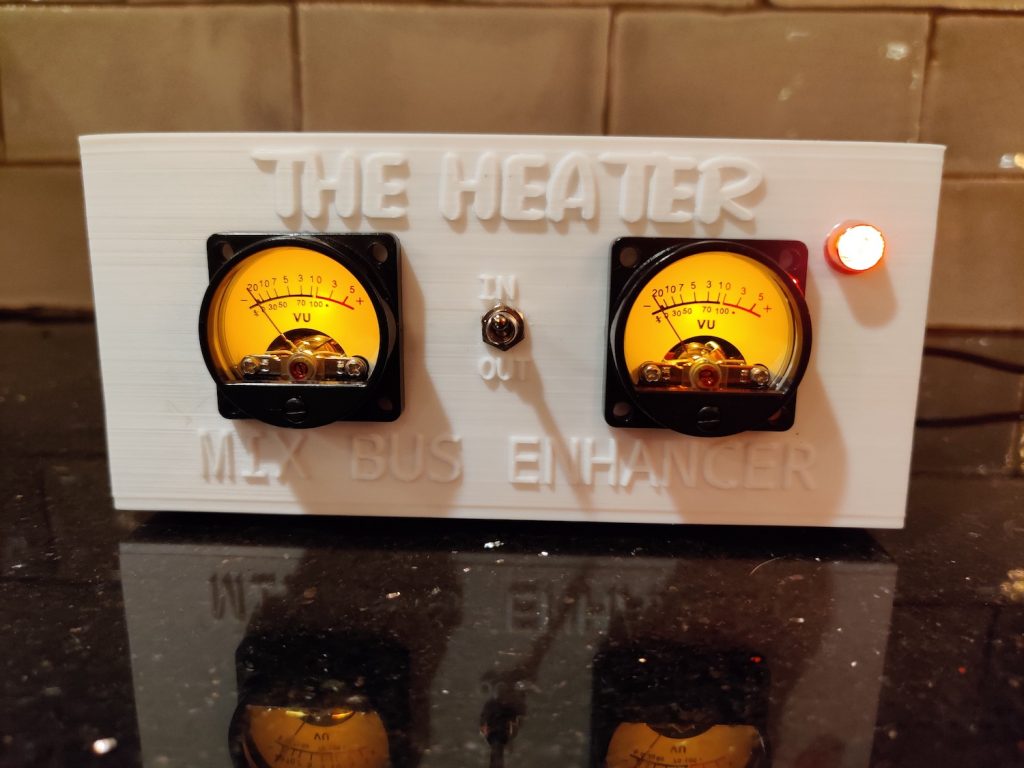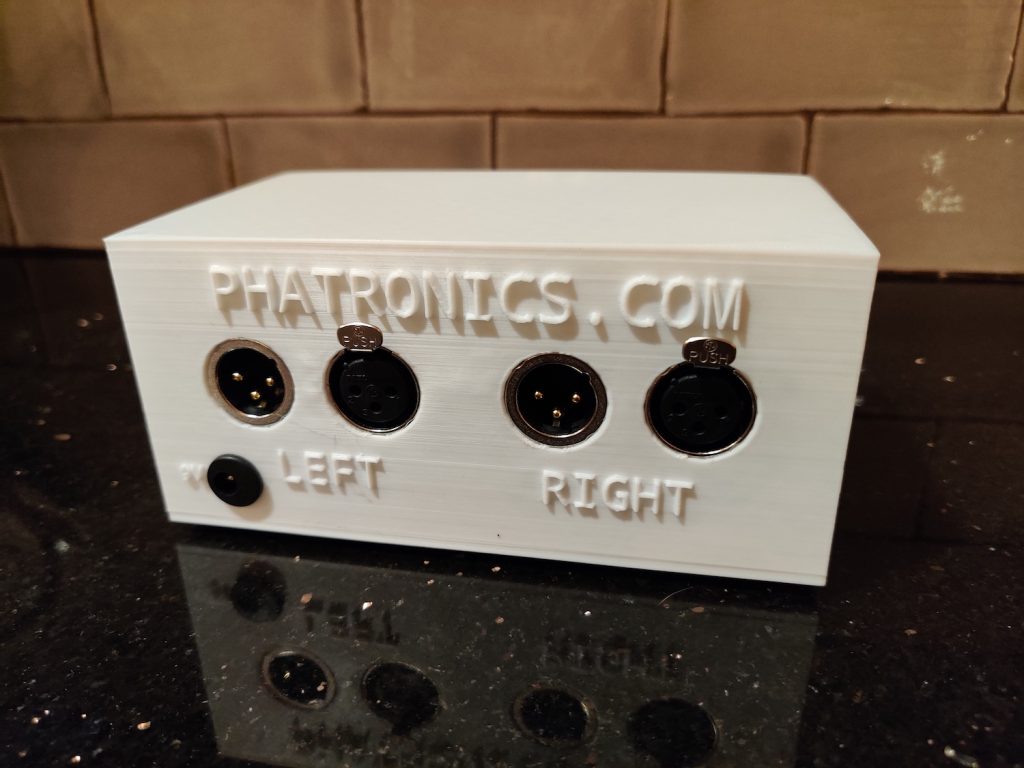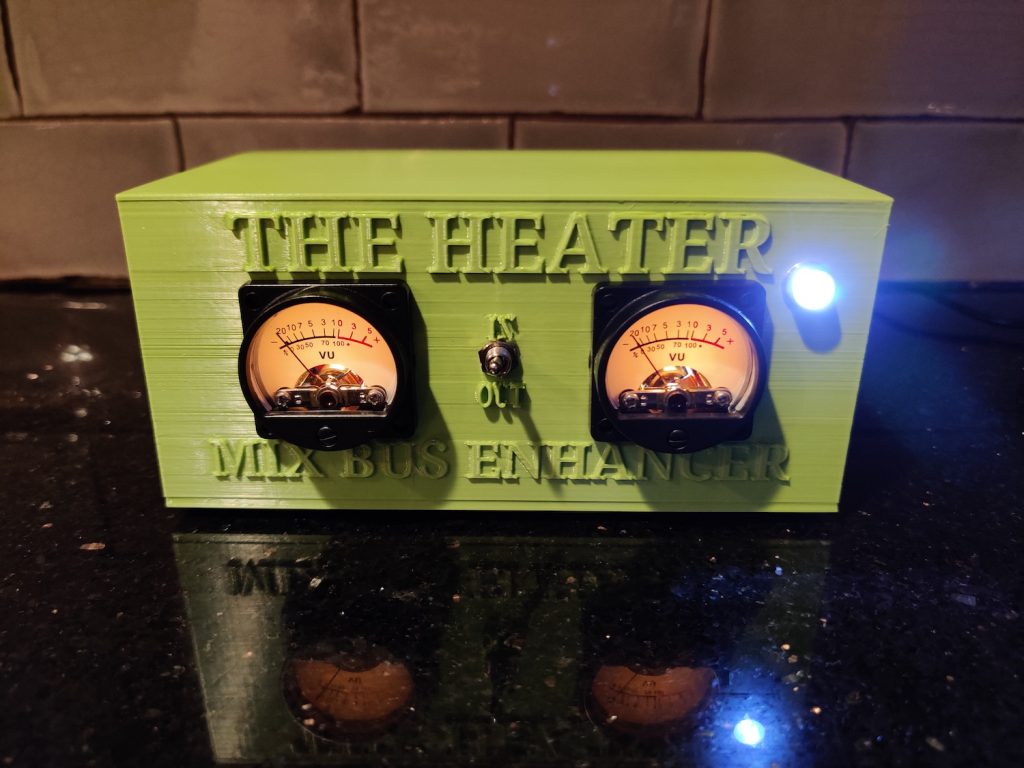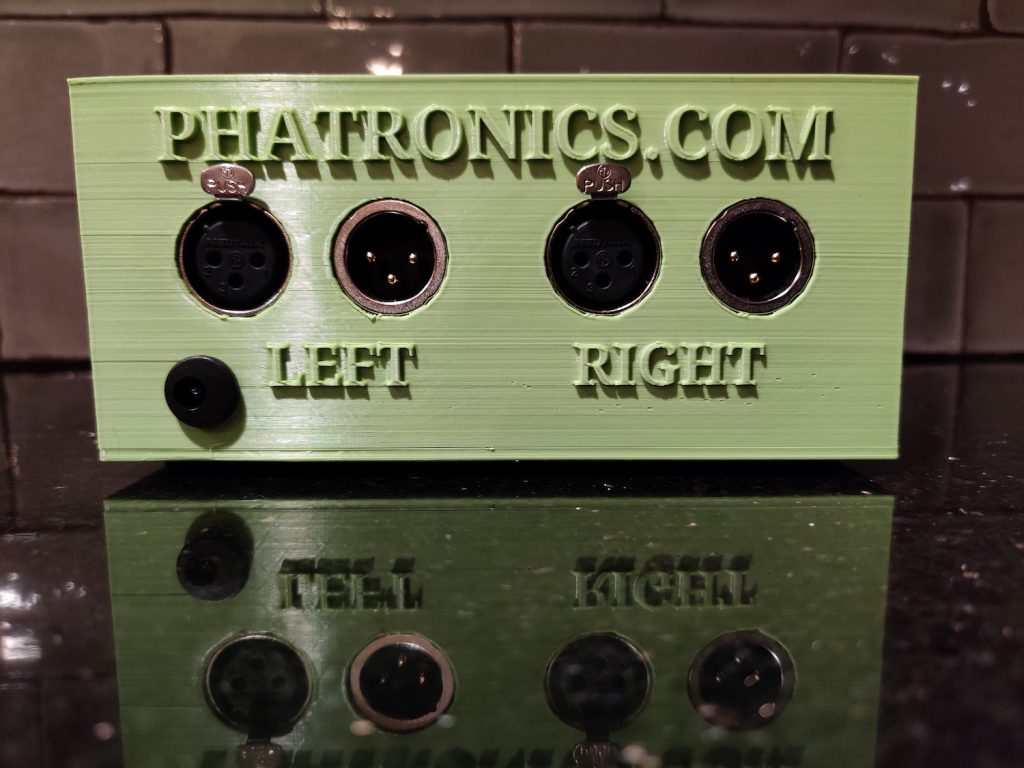The Heater Analog Mixbus Enhancer Harmonic Coloration and Glue for your mix!
The Heater. Analog Mixbus Enhancer. Patent Pending.
This has been an idea that has been floating around our heads for some time. Yes, there are many great plugins available that emulate analog sound. There is also some great hardware that you can run your mix bus through to make your sound warmer and fatter. The problem with the hardware is, that those types of boxes cost $3000.00 and up. They are out of reach for many of us.
Phatronics has figured out a way to make a box that sounds great, gives you that large format recording console sound, and it won’t break the bank.
THE HEATER
Introducing The Heater. The hand-made, point-to-point hand-wired box that runs your mix bus (or any source you want) through 600 ohm 1:1, isolated audio transformers. Now your DAW mix can REALLY sound like it is going through the center section of a vintage console.
A transformer is a component that transfers electrical energy from one circuit to another via inductively coupled conductors — coils of insulated wire wound (most often) around a ferromagnetic core. Transformers are useful in audio recording, as they can block DC voltage and facilitate electrical isolation between gear, but they also shape the sound of signals sent through them by introducing subtle, often very desirable “coloration.” This may be a result of any combination of frequency response, time response, distortion, or a number of other factors. These effects can be especially attractive when working in the digital realm, where sounds can be perceived as too “cold” or “digital.”
TRANSFORMER
The louder signals are applied to a transformer, the core saturates and clipping occurs. This distortion creates more low-frequency harmonics than high-frequency harmonics, leading to a warm, dense sound. Even at lower than clipping levels, the magnetic properties of the core change slowly, due to hysteresis7, which also leads to extra low-frequency harmonic content. Our transformer design provides its own unique flavor of harmonic coloration.
Somewhat like compression, a near-saturated transformer gives a mix of some glue and air, an indescribable filling in of sonic gaps for a more cohesive sound with more character and density. I sometimes run mixes through transformers at unity with no increase in level or saturation just for some of that analog glue.
Features
- Original Custom Designed Circuit
- Completely Hand Made
- Hand Wired, Point To Point
- Custom 3D Printed Case
- Phatronics Custom 600 Ohm 1:1 Audio Transformers
- Stereo analog meters with the driver board
- Stereo XLR In/Out
- Warm, Fat, Harmonic Coloration (The more you drive it, the more saturation)
- All top of the line electronic components
- Completely tested on the bench and in the studio
- Meter Calibration pots inside if need to adjust
- Electronic relays with flyback circuit
- Tested 50hz to 10k with no signal loss
- Comes with a 9V Adapter
GEEKY STUFF!
Transformers do a lot of different jobs. They balance inputs and outputs, match impedance, eliminate ground loops, block DC while passing audio, and the list goes on. A transformer is just two long wires wrapped around one magnetic core. The Signal passes from one wire to the other, but the wires don't touch. This is done using electromagnetism, where electric current creates magnetic fields and vice versa. The electrical current running through the first coil of wire, called the primary, creates a magnetic field in the core. This magnetic field then induces a corresponding voltage in the second, or secondary coil. We now have the same signal at both sides of the transformer, without a single electron making the journey directly from one wire to the other. Transformers sound really good. There are a couple of reasons for this, mostly having to do with the unique ways in which they fail to be perfectly clean and linear. Like all analog components, transformers clip when given too much signal. Transformer clipping happens when the core saturates and can't contain any more magnetic flux. This sets a hard limit on the amount of signal that can be transferred. The signal the transformer passes will then generate harmonic distortion. What makes transformer saturation so lovely is that the distortion it creates is inversely proportional to frequency, which is a fancy way of saying transformers create more warm, gooey, low-frequency distortion and less harsh, bright, high-frequency distortion. Transformers also exhibit another distortion phenomenon called hysteresis. This is the core's memory, where it stays magnetized for a short period of time after the signal is removed. This memory, which is also common to analog tape, creates warm, low-frequency distortion.



